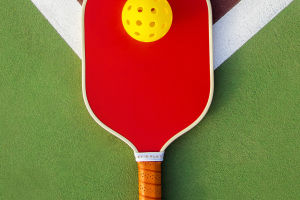Muay Thai vs. Boxing: An Analysis of Two High-Profile Fighting Arts
Greetings, Lyykers! Today, we embark on an exploration into the dynamic worlds of Muay Thai and Boxing—two titans of combat sports that have captivated audiences worldwide.
Join us as we dissect their techniques, philosophies, and enduring appeal in the ring. There's something here for everyone to appreciate and learn from these ancient and modern arts of combat. Let's dive in!
The Art of Eight Limbs: Muay Thai
Muay Thai, originating from Thailand, is celebrated as the "Art of Eight Limbs" due to its extensive use of fists, elbows, knees, and shins in combat. This martial art is not just about striking with power, but also about endurance, versatility, and resilience.
Muay Thai fighters undergo rigorous training that includes conditioning for all striking surfaces of the body, mastering clinch work, and developing defenses against a wide array of attacks.
Key Characteristics of Muay Thai
Versatility in Striking: Muay Thai fighters are known for their ability to use all limbs for striking, allowing for a diverse range of attacks and defensive maneuvers.
Clinch Work: The clinch is a distinct feature of Muay Thai, where fighters engage in close-quarters combat to deliver devastating knee strikes and elbows.
Power and Endurance: Due to the full-body engagement required, Muay Thai fighters exhibit remarkable stamina and the capability to sustain powerful blows throughout a fight.
The Sweet Science: Boxing
In contrast, Boxing, often hailed as the "Sweet Science," focuses primarily on punches delivered with the fists. Originating from ancient Greece and later gaining popularity in England and the United States, Boxing has evolved into a highly technical sport emphasizing footwork, head movement, and strategic combinations. Boxers are celebrated for their agility, speed, and tactical prowess in the ring.
Key Characteristics of Boxing
Punching Techniques: Boxing emphasizes the art of punching, including jabs, crosses, hooks, and uppercuts—all executed with technical precision.
Footwork and Defense: Boxers are trained to move swiftly around the ring, using footwork to create angles for attacks and to evade incoming punches.
Strategy and Timing: The strategic aspect of Boxing involves setting up combinations, reading opponents' movements, and exploiting weaknesses with calculated precision.
Contrasting Styles, Unified Appeal
While Muay Thai and Boxing differ significantly in techniques and rules, they share a common appeal rooted in the purity of combat. Muay Thai's inclusion of elbows, knees, and clinch work gives it a raw, visceral edge that attracts those who appreciate full-contact martial arts. Conversely, Boxing's focus on punches and defensive finesse appeals to fans who admire the technical mastery and strategic depth involved in outmaneuvering opponents.
Evolution and Influence
Both Muay Thai and Boxing have transcended cultural boundaries to become global phenomena. They have influenced other combat sports and disciplines, contributing techniques and training methodologies that enhance the overall spectrum of martial arts. Fighters often cross-train between these disciplines to hone their skills, resulting in hybrid styles that incorporate the best of both worlds.
Conclusion
In the debate between Muay Thai and Boxing, there is no clear winner. Each martial art offers unique strengths and challenges, appealing to different practitioners and fans alike.
Which fighting art resonates with you more—Muay Thai or Boxing? Are you drawn to the versatility of Muay Thai or the technical finesse of Boxing? Share your thoughts and experiences with us as we continue to explore the rich tapestry of martial arts and combat sports. Let's celebrate the dedication and passion that unite us in our love for Muay Thai, Boxing, and beyond!


